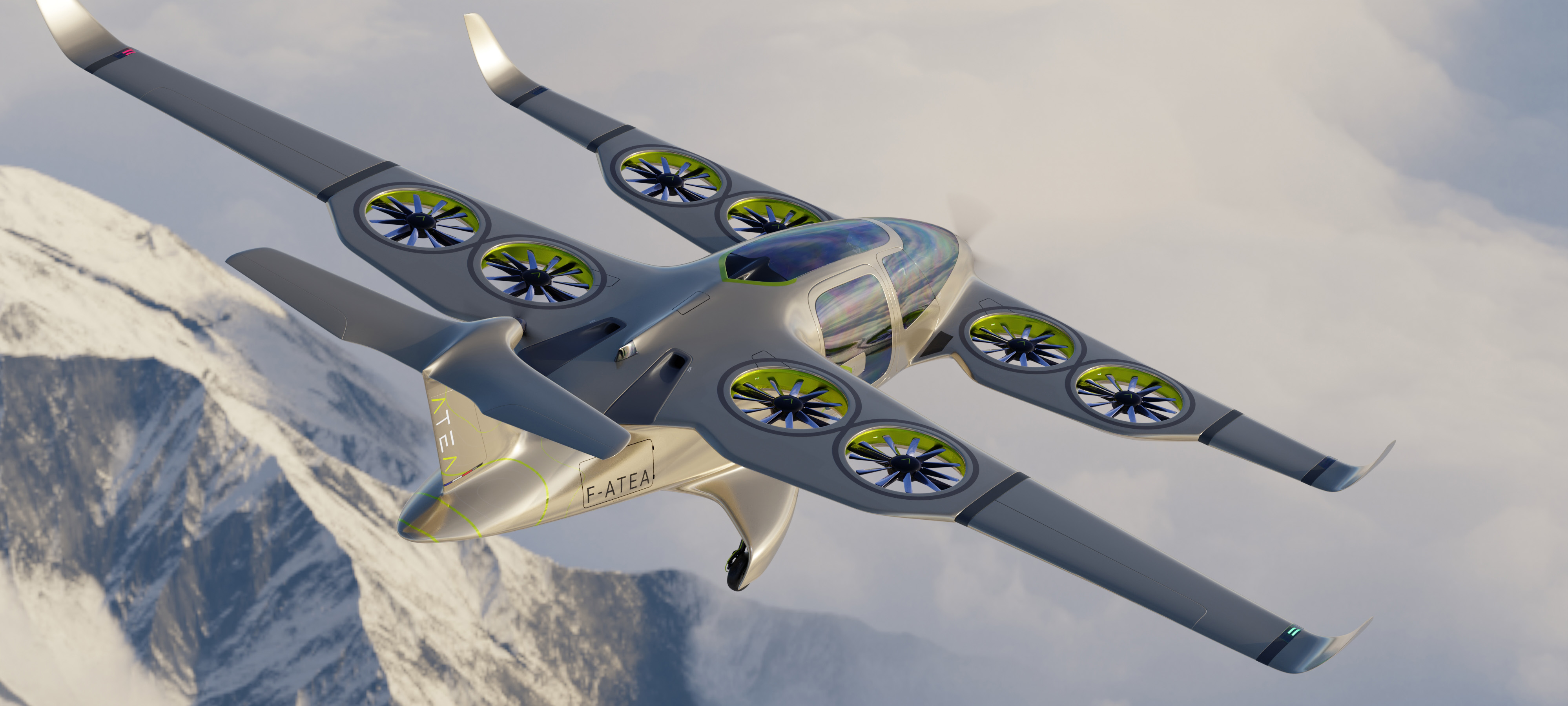



Ascendance Flight Technologies: France’s Hybrid eVTOL Trailblazer Revolutionizing Regional Flight
From the aerospace capital of Toulouse comes one of Europe’s most promising entries in sustainable air mobility: Ascendance Flight Technologies. With its signature hybrid-electric eVTOL aircraft, Atea, this French startup is building a bridge between clean aviation and real-world flight demands—blending long range, quiet operation, and low emissions in one sleek package. Where others focus solely on electric or urban markets, Ascendance is thinking bigger—targeting regional air mobility with a hybrid system designed for both practicality and impact.
The Founders: Four Airbus Alumni with a Mission to Decarbonize Aviation
Ascendance was founded in 2018 by four former Airbus engineers: Jean-Christophe Lambert, Benoît Ferran, Thibault Baldivia, and Clément Dinel. After working together on the Airbus E-Fan electric aircraft program, they set out to solve the industry’s greatest challenge: how to bring sustainability to scale in aviation.
Rather than chase hype, they built a team and a technology grounded in aerospace engineering—with a clear mission to cut carbon emissions while keeping range, speed, and safety intact.
The Aircraft: Meet Atea — A Hybrid eVTOL for the Real World
Ascendance’s flagship aircraft is Atea, a hybrid-electric, five-seat eVTOL built for regional transport. Unlike many urban air taxis with short ranges, Atea is designed to fly longer distances—up to 400 kilometers—with vertical takeoff and minimal noise.
Atea at a Glance:
- Capacity: 1 pilot + 4 passengers
- Range: Up to 400 km (~250 miles)
- Cruise Speed: ~200 km/h (~125 mph)
- Propulsion: Hybrid-electric (turbogenerator + batteries)
- Lift System: 8 ducted fans for vertical takeoff
- Noise Emissions: 4x quieter than a helicopter
- Carbon Impact: Up to 80% reduction in emissions compared to conventional aircraft
At the core of Atea’s powertrain is Sterna, a hybrid system that offers longer range without the dependency on charging infrastructure—ideal for operations where fully electric flight is not yet practical.
Mission: Cleaner Skies Through Realistic Innovation
Ascendance isn’t promising flying taxis for everyone—it’s building a sustainable aircraft for real transport needs:
- Inter-City Commuting: Skip the traffic and connect regional cities with ease
- Medical Missions: Enable faster, cleaner emergency evacuations
- Surveillance and Inspection: Quiet, stable platforms for aerial monitoring
- Cargo & Logistics: Deliver critical supplies to areas without airports
- Low Infrastructure Load: Works with today’s helipads, airports, and facilities
Ascendance believes the transition to clean aviation must be practical—that’s why they focus on hybrid systems and scalable designs.
Key Partnerships and Progress
Ascendance has already attracted global attention and strong industrial backing:
- Partnered with leading aerospace suppliers to develop propulsion components
- Signed early agreements for aircraft purchases by regional mobility providers
- Began prototype testing and simulation validation for certification
- Plans to build aircraft at a dedicated production facility in France
Atea’s first production and commercial flights are targeted for the mid-2020s, with certification and manufacturing now in motion.
Why Ceekers Should Watch Ascendance Flight Technologies
For Ceekers—tech visionaries, sustainability advocates, and immersive innovation leaders—Ascendance represents a blend of grounded design and futuristic ambition:
- Hybrid Thought Leadership: One of the few companies balancing electric innovation with practical range
- Mobility for Creators and Citizens: Not just for the elite—Atea’s range and affordability make it suitable for regional networks
- Quiet, Clean, and Capable: The aircraft’s low sound profile and reduced emissions align with climate-conscious cities
- Made for the Real World: Scalable now, adaptable for the next decade, and designed by people who understand aircraft certification from the inside out
Looking Ahead
With certification plans underway, production set to ramp up, and global partnerships in place, Ascendance Flight Technologies is one of the most realistic and forward-thinking eVTOL companies in Europe today. While others aim for spectacle, Ascendance is building an aircraft that works—cleanly, quietly, and at real scale.
PhotoCredit: Ascendance Flight Technologies (France)


